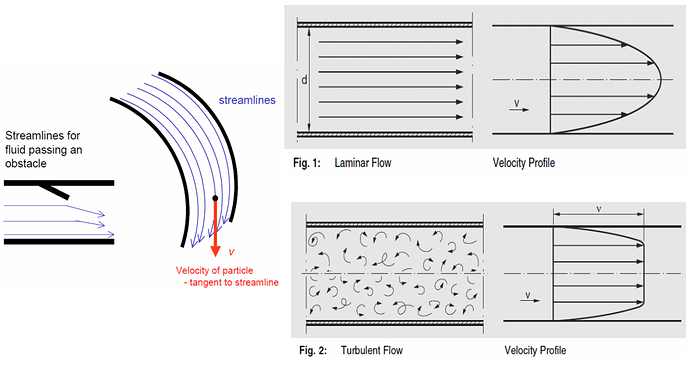• If the velocity of fluid inside the pipe is small, streamlines will be in straight parallel lines. As the velocity of fluid inside the pipe gradually increase, streamlines will continue to be straight and parallel with the pipe wall until velocity is reached when the streamlines will waver and suddenly break into diffused patterns. The velocity at which this occurs is called “critical velocity”. At velocities higher than “critical”, the streamlines are dispersed at random throughout the pipe.
• The regime of flow when velocity is lower than “critical” is called laminar flow (or viscous or streamline flow). At laminar regime of flow the velocity is highest on the pipe axis, and on the wall the velocity is equal to zero.
• When the velocity is greater than “critical”, the regime of flow is turbulent. In turbulent regime of flow there is irregular random motion of fluid particles in directions transverse to the direction on main flow. Velocity change in turbulent flow is more uniform than in laminar.
• Transitional Flow is type of flow, in which both types of flow may be present at different points along the pipe line or the flow may switch between the laminar and turbulence.
